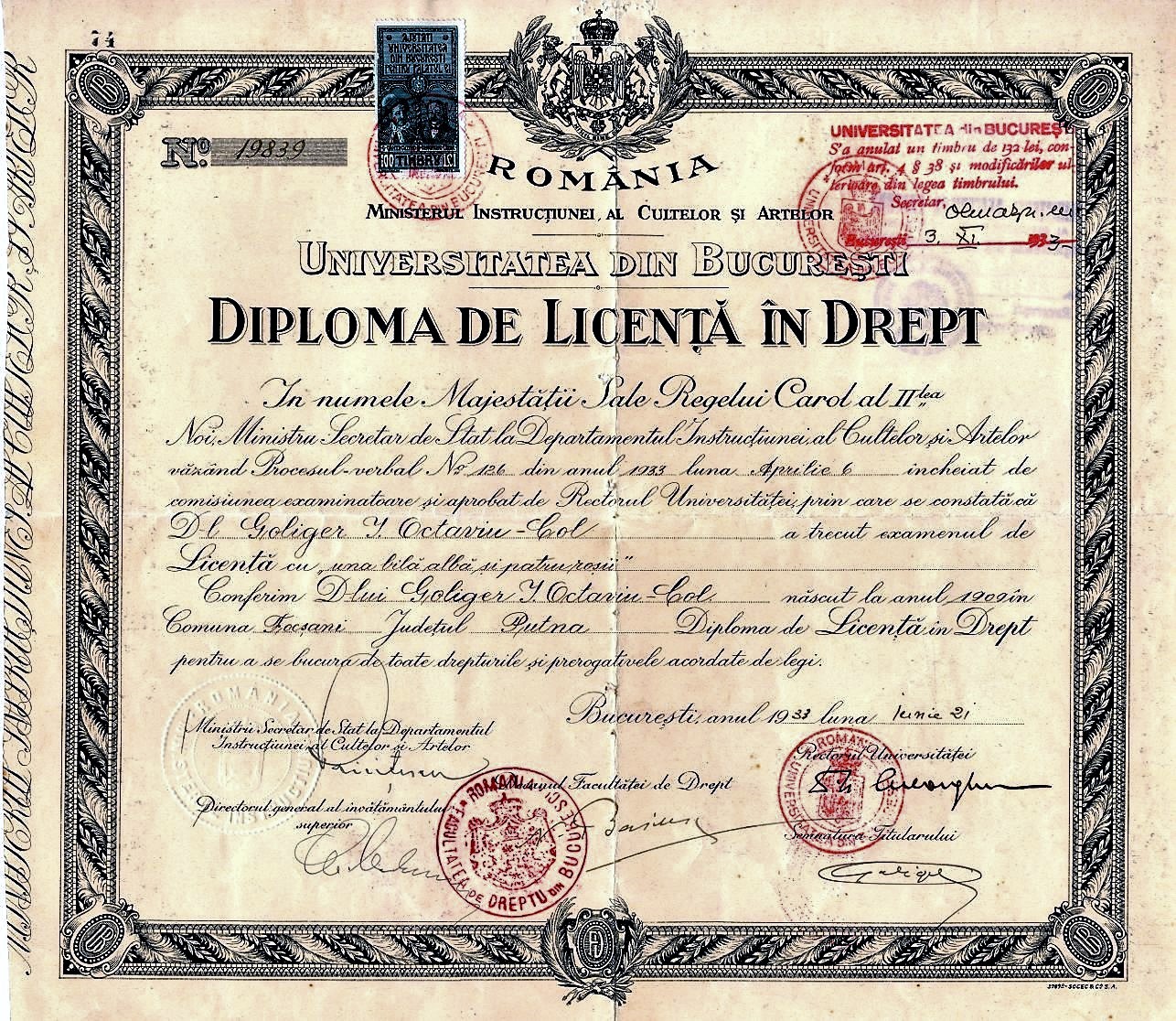
Toward the end of the 19th century, Jewish attraction to the liberal professions increased. In light of the importance attributed to education by Jews, it is not surprising that of the free professionals, teachers constituted the largest group, and by the end of the 19th century 78 out of the 1,224 teachers in Romania were Jews.
Jewish physicians were another big and important group in Romanian Jewish society. In spite of the limitation imposed on Jews to practice medicine in the years 1864- 1868, in 1874 there were 15 Jewish physicians out of the 92 in Bucharest. In 1904 Jews constituted about 40% of the physicians in all of Romania (221 out of the total 559), and in dentistry, Jews constituted the majority. Jewish engineers were a smaller group; in the early 20th century only 9 out of 139 engineers in Romania were Jews. In 1899, N. Laventer and Jacques Katz of Calea Regală (Royal Avenue in Bucharest) offered their professional services in sewage, drainage, public lighting, electricity, oil, gas, light bulbs, telephones, telegraphs and building industrial companies. The Jewish engineer Emil Prager was the first to use reinforced concrete in Romania in the construction of the modern "Brancovenesc" hospital. During the years 1930-1934, he also built the monumental library at Iași's Central University.
As a result of modernization, Romanian architecture in urban areas developed impressively during the second half of the 19th century. The number of Jewish architects in Romania was relatively small, 5 out of 64 at the end of the 19th century. Among,them, was Joseph Arad, an architect from Bucharest, whose office was at 10 Surorilor Street, and Jacques Marcovici, who designed and built the Sacré Cœur Institute in Iași in 1894.
Important Jewish architects, including A. G.Davidescu, Leon Nadolsky and Leonida Negrescu, graduates of the School of Architecture in Paris, were all involved in building for the Jewish community, including many educational institutions. From 1899-1911, they designed and built 37 buildings for educational institutions, some of which were particularly impressive. J. Esteruk, a representative of organizations involved in Jewish education development, wrote in 1912: "our buildings are a source of admiration, and are models".
During the 1920-1930's, Romanian architects, including Jews, built high-rise modern buildings, in Art-deco and Bauhaus styles. The most important were Marcel Iancu (Janco), Marcel Locar, Hermann Clejanand Jean Monda. Horia Maicu was an architect who worked after Wold War II and designed the National Theater in Bucharest. In the arts, the proportion of Jews working as engravers (13 out of 17) and photography (55 Jewish photographers out of 120 in all Romania) was notable. In addition, the number of Jewish sign-makers was 27 out of a total of 98.